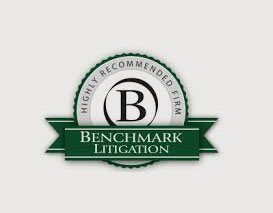Second Department Holds that Right to File a Notice of Pendency May be Waived
Print Article- Posted on: Oct 18 2024
A notice of pendency (or lis pendens) is a provisional remedy available to litigants seeking a judgment that affects title to real property. 5303 Realty Corp. v. O&Y Equity Corp., 64 N.Y.2d 313 (1984). The purpose of a notice of pendency is to put defendants and the world on notice of the full scope of the rights claimed by plaintiffs to defendants’ real property. Sjogren v. Land Assoc., LLC, 223 A.D.3d 963, 965 (3rd Dep’t 2024).
Notices of pendency are governed by Article 65 of the CPLR. This BLOG has previously discussed notices of pendency in a variety of different contexts. See, e.g., [here], [here], [here] and [here]. Among others, the filing of notices of pendency is typical in mortgage foreclosure actions[1] and actions for specific performance of real estate contracts.[2] Conversely, in an action for the return of a downpayment related to the sale of real property, the contract vendee was not entitled to a notice of pendency because the complaint sought only money damages and, accordingly, any resulting judgment would not “affect the title to, or the possession, use or enjoyment of, real property.” Mallek v. Felmine, 227 A.D.3d 977, 978 (2nd Dep’t 2024).
Because the “ability to file a notice of pendency is a privilege that can be lost if abused,” once lost a successive notice of pendency may not be filed after the initial notice is cancelled. In re Sakow, 97 N.Y.2d 436, 441 – 42 (2002) (citations omitted). Moreover, an application to extend a notice of pendency must be made “prior to the expiration of the prior notice” and an expired notice, without extension is a “nullity”. Sakow, 97 N.Y.2d at 442 (citations omitted). The “no second chance” rule applies whether the notice expires or is cancelled. Id. An exception to the “no second chance” rule is found in CPLR 6516, which permits successive notices of pendency in mortgage foreclosure actions because RPAPL 1331 requires that a notice of pendency must be filed “at least twenty days before a final judgment directing a sale is rendered”.[3]
On October 16, 2024, the Appellate Division, Second Department, decided Underhill Venture, LLC v. Sarang, in which the Court addressed an interesting issue – whether a party to a contract can waive the right to file a notice of pendency. The parties in Underhill entered into a contract pursuant to which the plaintiff was to build a house on certain property and sell the land and the house to the defendant. After an alleged payment default, the plaintiff commenced an action against the defendant “to declare the contract null and void and to retain the defendants’ down payment.” The defendants interposed counterclaims for damages and filed a notice of pendency. The plaintiff, inter alia, moved to cancel the notice of pendency and the motion court denied the motion.
Using rules of contract interpretation[4], the Second Department reversed because the parties’ contract expressly prohibited the filing of notices of pendency. In so doing, the Court stated:
Turning to the merits, with respect to the order dated September 21, 2023, the Supreme Court erred in denying that branch of the plaintiff’s motion which was to cancel the notice of pendency (see CPLR 6501; Matter of Sakow, 97 NY2d 436, 441). Here, the parties agreed in a rider to the contract that “the right to file a Lis Pendens in any action is hereby waived irrevocably.” “[W]hen parties set down their agreement in a clear, complete document, their writing should . . . be enforced according to its terms,” and “[i]n the absence of any ambiguity, we look solely to the language used by the parties to discern the contract’s meaning” (Vermont Teddy Bear Co. v 538 Madison Realty Co., 1 NY3d 470, 475 [internal quotation marks omitted]).
Jonathan H. Freiberger is a partner and co-founder of Freiberger Haber LLP.
This article is for informational purposes and is not intended to be and should not be taken as legal advice.
[1] Eds. Note: this BLOG has written numerous articles addressing all aspects of residential mortgage foreclosure. To find BLOG articles related to foreclosure, visit the “Blog” tile on our website and enter “foreclosure” (or any related topic of interest) in the “search” box.
[2] Eds. Note: this BLOG has written numerous articles addressing specific performance of real estate contracts. To find BLOG articles related to specific performance of real estate contracts, visit the “Blog” tile on our website and enter “specific performance” in the “search” box.
[3] Eds. Note: this BLOG has addressed the issue of successive notices of pendency in mortgage foreclosure actions [here] and [here].
[4] Eds. Note: this BLOG has written numerous articles addressing contract interpretation. To find BLOG articles related to contract interpretation, visit the “Blog” tile on our website and enter “contract interpretation” (or any related topic of interest) in the “search” box.





